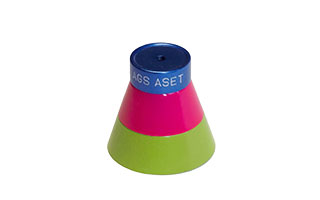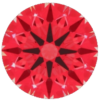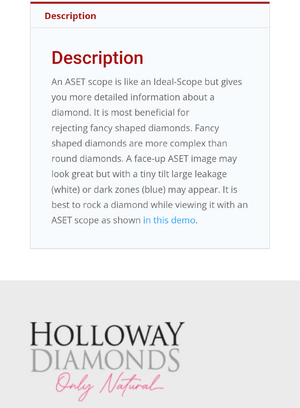Dmond
Rough_Rock
- Joined
- Sep 6, 2023
- Messages
- 23
ASET is mainly intended for evaluating round brilliant diamonds. This is patently not a round brilliant and almost certainly not a diamond.
This is a novelty cut with the cool feature being the see-through star in the centre. No ASET is needed to check that.
This looks like the same stone as in this thread:

 ideal-scope.com
ideal-scope.com

ASET is invaluable for fancy shapes.

ASET Scope - Ideal Scope
Tri colour scope that is best suited for fancy shapes. Two lens in metal housing.ideal-scope.com

Fair point.
But this novelty cut is beyond the usual fancy cuts. The point of it is the curved outline and the see-through star. These can be seen directly in ordinary lighting, no ASET needed.
Fair point.
But this novelty cut is beyond the usual fancy cuts. The point of it is the curved outline and the see-through star. These can be seen directly in ordinary lighting, no ASET needed.
Hello Dejawizz, thanks for answering me again.I think ASET images for any shape, usual fancy or novelty, provides excellent info to learn from.
The trick is getting an unorthodox novelty shape properly aligned and backlit so that the ASET Scope images are accurate, which we don't know if this is one of those situations or not.

Hey, you should check out this new site, www.yourdiamondguys.com. It’s got this cool AI that scans for inclusions and weeds out the bad ones, so you only see the best diamonds with nice imperfections. Plus, there’s tons of info on there to help you out.
The ASET shows the huge window in the middle of the gem very well indeed.
It looks like a fun cut with interesting patterns if its big enough to see them.
Whats the mm measurements?
kewl size for the cut.I also think it shows an interesting distribution
It has 12.7mm.
I think it is because of the alignment of the facets
I assume this feature is due to the symmetry of the facets, which reflects light in a specific way.
It was cut intentionally that way its whats called a pattern cut(cut to show patterns) a more modern name is a fantasy or novelty cut.
They are often created for the first time for faceting competitions.
Thanks so much for the explanation.
What period do you think these types of faceting were used? The type of ring and setting is from the late XVIII or early XIX.
The aset takes a lot of interpretation and the stone is tilted but for a pattern cut it looks very very nice.
For this kind of cut you throw a lot of the RB diamond rules out the window and subjectively judge it for what it is.
Can you post a video of it in motion please?
This is a holistic approach and as it says it would go beyond standard or traditional (RB) metrics.
I think this faceting greatly maximizes the light performance in a unique way.
I have found few examples, with this type of cross.